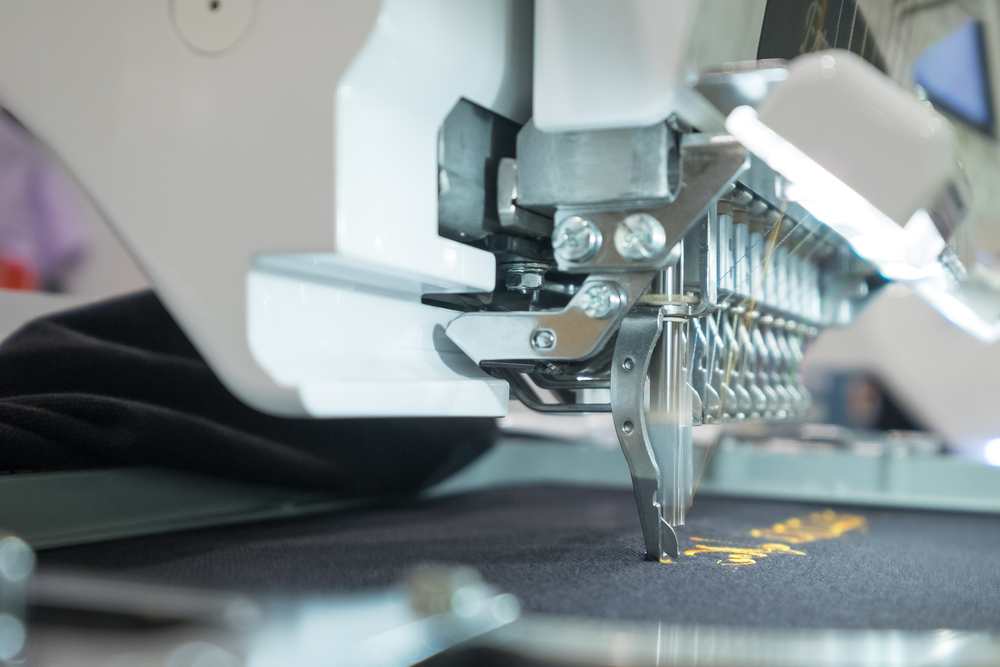6 Things to Consider When Purchasing Custom Embroidery
Purchasing custom embroidery is an excellent way to raise awareness for your brand. From t-shirts to polo’s, drink holders to hats and beanies, you can have nearly any fabric-based product embroidered. Whether you’re embroidering work uniforms for consistent use or choosing to put more money into your freebies, you’ll want to make sure you’re considering these 6 things when purchasing custom embroidery.
1. Provide the best quality images as you can.
Remember that embroidery uses thread to apply your amazing logo to a piece of fabric. That means the image you provide needs to be as large, clear, simple, and clean, as possible in order for your logo to translate well. Do you have an image with many small details? Fine lines and tiny details will make things challenging. You may even find that you need to make an image specifically for this purpose so that it’s completely clear. It’s best to eliminate color gradients because they can easily lose clarity in embroidery. Any text should be at the very minimum ¼ inch tall.

2. Choosing the right fabric.
This is a very important step when considering custom embroidery because the materials you choose will affect the outcome and the way embroidery is applied. For the best results, you want to choose a strong, thicker fabric with a tighter weave that will be able to hold your design. Deep pile materials, like fleece or terry cloth, make embroidery challenging and can fade the sharpness and clarity of your design. Soft fabrics, like rayon and silk, also make embroidery more difficult, requiring more stitches. The fabrics that hold embroidery best are standard outerwear and twill fabrics.
3. Choosing the color of your fabric.
Not only is the specific type of material important, but you’ll want to keep in mind the color of the piece you are having embroidered. Does it clearly communicate your brand? Will people feel comfortable wearing the color you’ve chosen? Will the colors of thread used for
Not only is the specific type of material important, but you’ll want to keep in mind the color of the piece you are having embroidered. Does it clearly communicate your brand? Will people feel comfortable wearing the color you’ve chosen? Will the colors of thread used for embroidery show up clearly on the type and color of your fabric?
4. Choosing the type of thread.
You’ll want to choose your thread based on the purpose of the item(s) you are having embroidered. Are you embroidering sports uniforms or shirts for industrial occupations? Polyester is a better thread choice for these types of needs because it’s durable and resistant. Polyester thread allows for bleaching and can withstand detergent and hot water. For items with less wear and tear like company shirts or retail items, rayon is a great option. It’s shiny, smooth, and can be used for more delicate fabrics.
5. Choosing the location of embroidery.
If you are embroidering a shirt or jacket, where will you want your design to be located? The most common place for an embroidered logo is over the heart. However, this may not be the best location for your particular needs. Is the logo likely to be covered by an apron? Are you including more than just a logo that will cover a larger area of fabric? It may be better to move the logo to the back of the shirt.
6. Consider the stitching you will need.
Part of determining the cost of your embroidery project has to do with the stitching you need. Does your design require lots of stitching to fill large areas of color? Do you have small details that will need different types of thread to make the design as true to your image as possible? Remember, the more complex your design and the more lines and detail you are wanting to include, the more expensive your stitch count.
Have a custom embroidery project for your business that you would like to get done? Call us at 970-482-6922 or contact us via our contact form.
